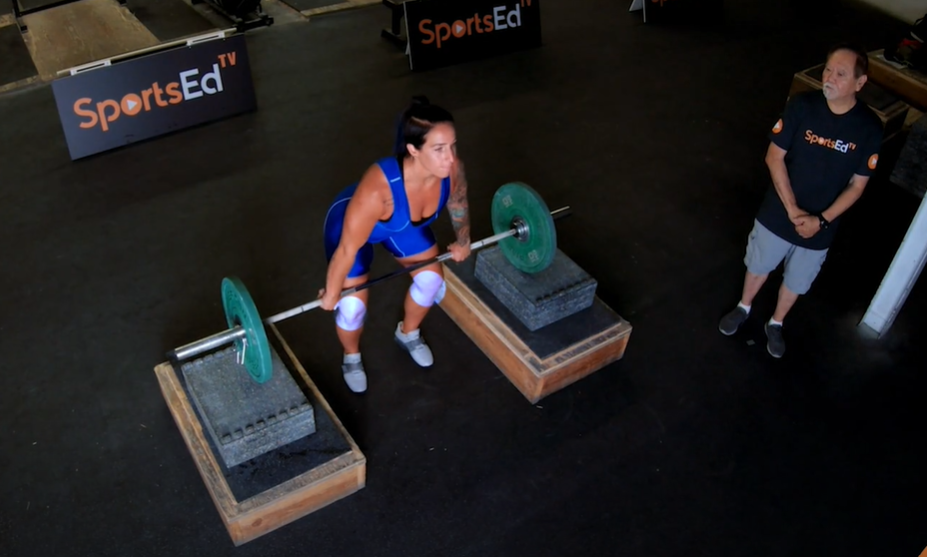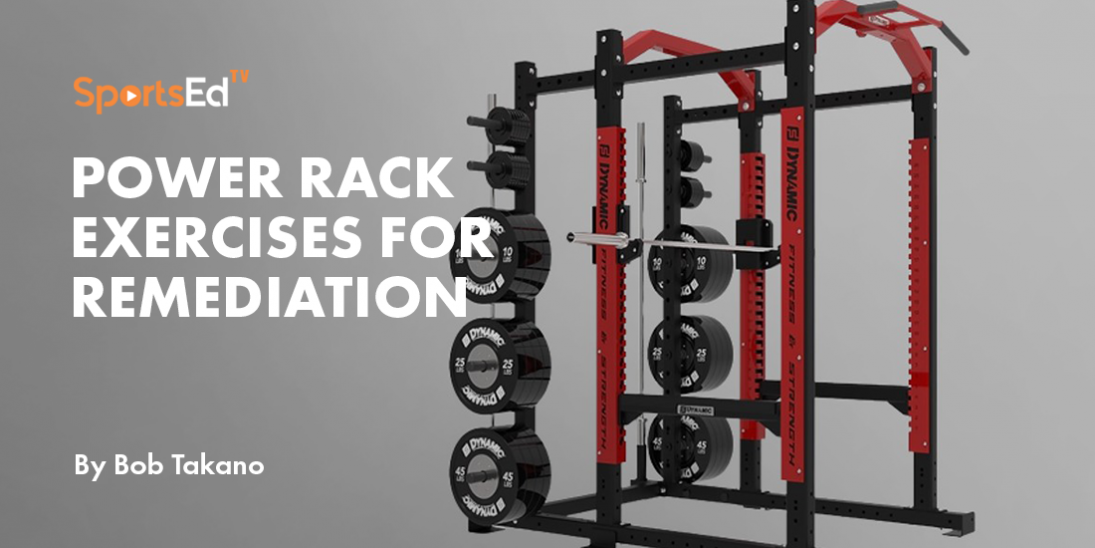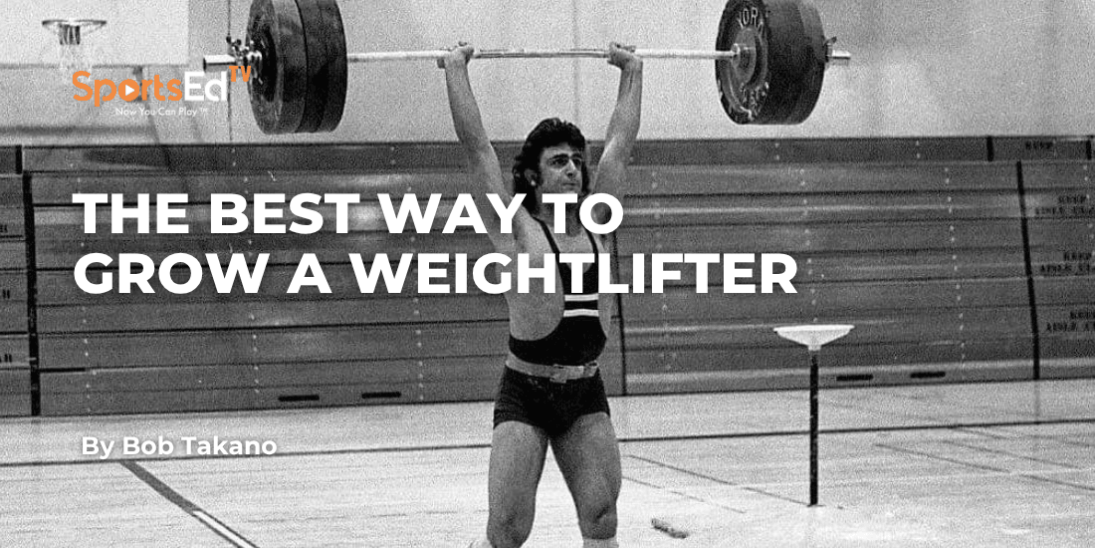Welcome and thanks for visiting...

Maximizing Strength and Technique: The Role of Pulling Blocks in Weightlifting Training

To see this video, you must be a member. Membership options:
Free - newsletter, video & blog access,
earn

Yearly - full access & member features
earn 5x

US$179 - may be lower outside US
Lifetime - same as yearly, but forever
earn 10x

US$350 - may be lower outside US
earn

Yearly - full access & member features
earn 5x

US$179 - may be lower outside US
Lifetime - same as yearly, but forever
earn 10x

US$350 - may be lower outside US
MySportsEdTV is a community where people share their passion for sports. It’s a place where athletes, coaches and parents can share information and share experiences. It’s a place to make new friends across the globe. Members have access to great features unavailable to non-members. Members receive helpful information via our FREE email newsletters. We always respect your privacy and your data will not be sold or shared
To use this function, you must be a full member. Membership options:
Free - newsletter, all video & blog access
Yearly - full access & member features
US$179 - may be lower outside US
Lifetime - same as yearly, but forever
US$350 - may be lower outside US
You may also use a promo code for payment
Yearly - full access & member features
US$179 - may be lower outside US
Lifetime - same as yearly, but forever
US$350 - may be lower outside US
You may also use a promo code for payment
MYSportsEdTV is a community where athletes, coaches and parents connect and share their sport passion. We don’t sell our member data or send spam. Members will receive our FREE email newsletter to alert you about new video and blog content for the sports you follow.
To use this function, you must be a paid member. Membership options:
Free - newsletter, all video & blog access
Yearly - full access & member features
US$179 - may be lower outside US
Lifetime - same as yearly, but forever
US$350 - may be lower outside US
You may also use a promo code for payment
Yearly - full access & member features
US$179 - may be lower outside US
Lifetime - same as yearly, but forever
US$350 - may be lower outside US
You may also use a promo code for payment
MYSportsEdTV is a community where athletes, coaches and parents connect and share their sport passion. We don’t sell our member data or send spam. Members will receive our FREE email newsletter to alert you about new video and blog content for the sports you follow.
Why Pulling Blocks Are Overlooked in Weightlifting
I spend some of my time reading posts online from people experiencing problems on their weightlifting journeys. These posts are usually accompanied by posts from people at various stages of coaching development. Regarding problems with pulling technique, I rarely encounter the suggestion of employing pulling blocks.
The Importance of Pulling Blocks in Weightlifting Development
Weightlifting enthusiasts can agree that a universally accepted body of knowledge exists for weightlifting development. There might be some bits and pieces along the periphery that are espoused by a small group of outliers, but most of the main body can be agreed upon by a majority of practitioners. By the way, the outliers are frequently driven by marketing considerations.
One piece of equipment that has long been a staple for weightlifting development is pulling blocks. I understand that they are heavy and cumbersome, and they present problems with adjusting them to the proper height for a variety of lifters, but they are especially effective for teaching the technique of the second pull and for developing strength in the pull. While very few “authorities” are invoking the use of blocks, there is a large number recommending the use of halting pulls or lifts below the knees. These may be an acknowledged tool in the coach’s toolbox, but most lifters don’t have a problem that will be solved by them.
Benefits of Training with Pulling Blocks
Enhancing the Power Position
Power snatches, power cleans, snatches, cleans, and pulls can all be performed off blocks set at the height that will allow the lifter to position the body in the power position. This has the benefit of allowing the lifter to “feel” the power position. As we all know, the teaching of technique is largely the teaching of proper position or enhancing kinesthesia.
Improving Balance and Pressure Distribution
Lifting from the power position enables the athlete to feel the center of pressure on the balls of the feet.
Reinforcing Proper Knee and Hip Extension
Lifting from the power position allows the athlete to focus on knee and hip extension and achieve a complete extension of both joints.
Preventing Premature Arm Pull
It can also be very helpful in inhibiting premature arm pull.
Strengthening the Full Pulling Sequence
It will allow athletes to focus on a full pulling sequence if they have a tendency to prematurely abandon the pull and drop into a deep squat.
Improving Speed and Confidence in the Drop
Positioning the blocks so that the bar is higher than the power position is extremely helpful for those athletes who are inhibited from dropping quickly into the deep squat in both the snatch and clean.
When to Use Pulling Blocks in a Training Cycle
So now the quandary becomes deciding when to implement pulls and lifts from blocks in developmental training. They can be especially helpful when the athlete is working to develop and perfect technique. The issue for many coaches may be when to lower the frequency of block usage and transition over to more lifts from the floor.
Avoiding Over-Reliance: Transitioning from Blocks to Floor Lifts
During my coaching career, I’ve run into some “block champs” who didn’t transition soon enough to lifting from the floor. While blocks are an excellent tool, lifters need to progress to full movements from the ground to ensure they are applying their technique across all phases of the lift.
Pulling Blocks in Strength Development vs. Competition Preparation
For those who have mastered the technique but need strength gains in the high pull, blocks might be implemented into the training during the preparation mesocycle but not during the pre-competition mesocycle.
Final Thoughts: Pulling Blocks as a Key Training Tool
In summary, blocks are an extremely valuable training variant but must be dosed appropriately. When used correctly, they can help refine technique, build strength, and reinforce proper movement patterns—ultimately leading to better performance on the platform.









